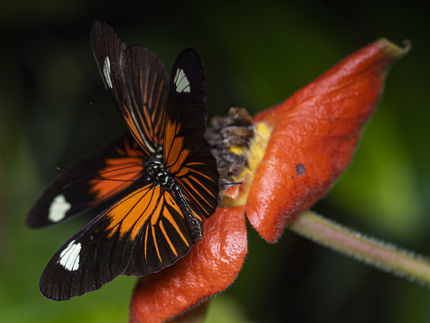Bug splatter on your car’s windshield is a treasure trove of genomic biodiversity
If you have ever taken a long road trip, the windshield of your car will inevitably be splattered with bugs by the time you arrive at your destination. Could the DNA left behind be used to estimate the diversity of insects in the region? In a study published online in Genome Research, scientists answered this question, utilizing a novel analysis pipeline that will accelerate future studies of biodiversity.
Recent advances in DNA sequencing technology are allowing researchers to investigate genomic questions of a scale and depth not previously possible. Among the fields benefiting from these new innovations is metagenomics, an approach applying DNA-sequencing technology directly to environmental samples. Scientists can now estimate biodiversity by sequencing DNA collected nearly anywhere, from extreme environments to your own skin, and the possibilities seem limitless.
Metagenomics has traditionally been applied to microbial samples, but investigators led by Anton Nekrutenko of Penn State University believe that this tactic can be utilized in studies of biodiversity of higher organisms. However, they also understand the complex computational infrastructure needed to interpret the massive amounts of data typical of these studies in an accurate and reproducible manner. “Metagenomics is still a ‘soft science,’” said Nekrutenko, “where precise identification of species abundance in complex samples is very, very challenging.”
To meet this challenge, the group developed the Galaxy metagenomic pipeline, an analysis approach that incorporates all steps of analysis, from handling raw sequencing data to the drawing of evolutionary trees. Nekrutenko and colleagues then put the pipeline to the test by conducting one of the first metagenomics studies of eukaryotic biodiversity.
The group set out to collect a metagenomic sample with the goal of estimating how many species of insects resides in our immediate surroundings. To gather genetic material, they utilized a simple but effective collection method – the front bumper of a moving vehicle. Two samples of bug splatter were collected, the first after driving from Pennsylvania to Connecticut, and the second after traveling from Maine to New Brunswick, Canada.
After sequencing DNA from the splatter samples, the research team used their metagenomic pipeline to address the question of how many species inhabit the regions sampled on the trips. The group accurately identified sequences corresponding to a number of insect taxa amongst other sequences, primarily matching bacteria. Furthermore, they found significant differences in diversity between the first and second trips.
The authors note that there are likely many other insect species that went undetected, as the diversity of organisms represented in sequence databases is currently limited. However, with advances in sequencing technology rapidly driving down costs, the genomic catalog of species diversity is expected to grow rapidly. Together with advanced analysis methods such as the Galaxy pipeline, comprehensive biodiversity studies of all of the life around us are within reach.
Original publication: Kosakovsky Pond S, Wadhawan S, Chiaromonte F, Ananda G, Chung W, Taylor J, Nekrutenko A; "The Galaxy Team. Windshield splatter analysis with the Galaxy metagenomic pipeline."; Genome Res 2009.
Other news from the department science

Get the life science industry in your inbox
By submitting this form you agree that LUMITOS AG will send you the newsletter(s) selected above by email. Your data will not be passed on to third parties. Your data will be stored and processed in accordance with our data protection regulations. LUMITOS may contact you by email for the purpose of advertising or market and opinion surveys. You can revoke your consent at any time without giving reasons to LUMITOS AG, Ernst-Augustin-Str. 2, 12489 Berlin, Germany or by e-mail at revoke@lumitos.com with effect for the future. In addition, each email contains a link to unsubscribe from the corresponding newsletter.



















































